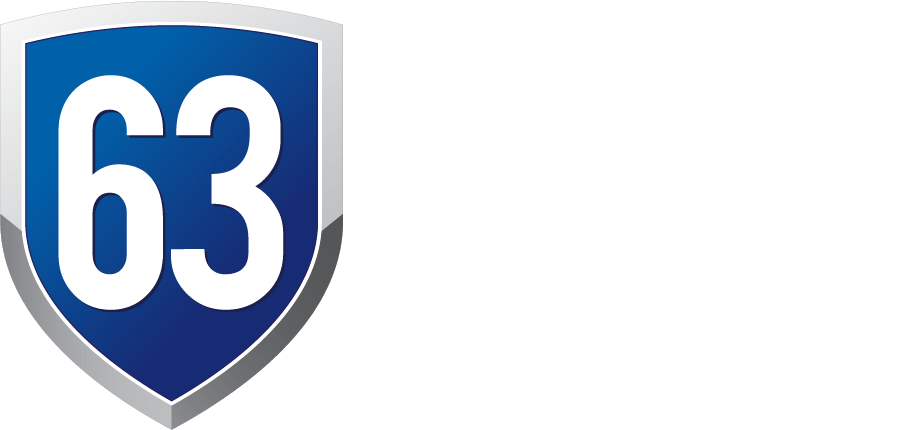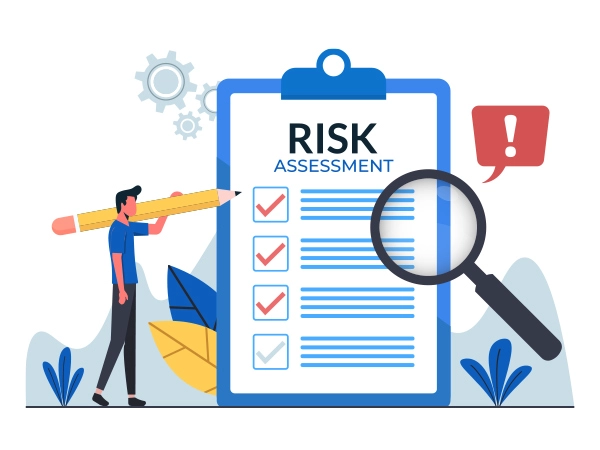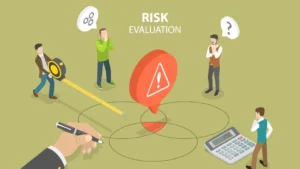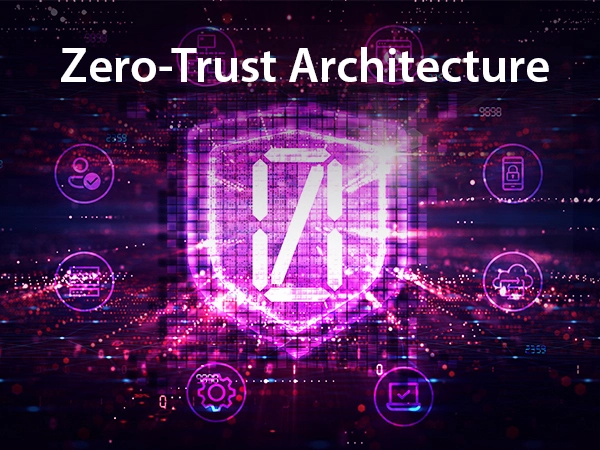Index
- Introduction
- Understanding the Risk Assessment Process
- How to do a Risk Assessment?
- The Role of 63SATS in Enhancing the Risk Assessment Process
- The Upside of Partnering with 63SATS for Risk Assessment
- Conclusion
- FAQs
Across industries, organizations increasingly recognize the necessity of adopting a proactive cybersecurity approach. Specialized entities such as 63SATS serve as crucial allies in this endeavor through partnerships. This blog delves into the intricacies inherent to risk assessment steps, highlighting their pivotal role within cybersecurity and underscores unique benefits derived from collaborating with 63SATS for this critical task.
Understanding the Risk Assessment Process
The risk assessment process, at its core, actively identifies potential cybersecurity risks to an organization. Through systematic analysis and evaluation of these threats, not merely their random treatment or monitoring, it offers a proactive security posture, one that allows organizations to anticipate and mitigate upcoming dangers before they become tangible realities.
How to do a Risk Assessment?
A comprehensive risk assessment process serves as the cornerstone of effective cybersecurity. It employs a systematic approach that involves identifying, evaluating, and subsequently mitigating potential risks within an organization. The procedure involves key steps that enable organizations to not only recognize but also fortify their defenses against cyber threats. Let’s examine these critical elements:
a. Risk Identification: Recognizing Potential Risks
The risk assessment process initiates by identifying potential risks in the organizational landscape. To pinpoint vulnerabilities that cyber threats could exploit, one must conduct a thorough examination of assets, systems and processes. This involves particularly scrutinizing these elements to identify possible points for exploitation by such threats.
The risk assessment process initiates by identifying potential risks in the organizational landscape. To pinpoint vulnerabilities that cyber threats could exploit, one must conduct a thorough examination of assets, systems and processes. This involves particularly scrutinizing these elements to identify possible points for exploitation by such threats.
Vulnerability Scanning
It involves use of automated tools to scan networks, systems, and applications for known vulnerabilities. This method offers a systematic approach to identifying weaknesses that potential attackers could exploit.
Penetration Testing
In a controlled environment, simulation of cyber-attacks to unmask potential vulnerabilities and weaknesses is done. By mimicking real-world scenarios, this method aids in the identification of both known and unknown risks.
Threat Intelligence Analysis
This method leverages current and emerging cyber threat information to identify potential risks. It entails vigilant monitoring of external sources for updates on new vulnerabilities, attack vectors, and threat actors.
b. Risk Analysis: Evaluating and Analyzing Identified Risks
Systematically identifying possible hazards is the first stage in performing a comprehensive risk analysis. In order to comprehend the features, possible consequences, and probability of occurrence of the risks, it is necessary to critically evaluate and analyze them. The analysis utilizes a practical combination of techniques, including qualitative and quantitative methodologies.
Qualitative Analysis
Subjective assessment of risks involves evaluating factors like severity, likelihood, and impact. Qualitative analysis provides a holistic understanding of the risks without relying on specific numerical values.
Quantitative Analysis
The utilization of numerical data allows for a comprehensive risk assessment, encompassing factors such as financial impact, probability and potential loss. This method requires the assignment of numerical values to diverse risk elements thus presenting an inherently more quantitative and measurable perspective on the potential risks.
c. Risk Evaluation: Assessing Severity and Impact
A set of criteria forms the foundation for the risk evaluation step. It systematically assesses severity and impact of identified risks. This comprehensive assessment considers potential harm to assets, financial implications and likelihood of occurrence. Each identified risk, when assigned a risk rating, empowers organizations as they can make judicious and informed decisions regarding resource allocation. Furthermore, it allows them to formulate effective strategies for mitigating potential risks.
d. Risk Treatment: Mitigating or Controlling Risks
Following the identification, analysis, and evaluation phases, the subsequent focus centers on risk treatment, wherein strategies are implemented to mitigate or control identified risks. This crucial step underscores the significance of judiciously selecting appropriate risk treatment options commensurate with the nature and severity of the risks at hand. Common risk treatment strategies include:
Risk Mitigation
To mitigate the probability or consequences of identified risks, one must consider actions such as patching vulnerabilities, implementing security controls, or enhancing security protocols.
Risk Transfer
Particularly relevant for risks with high financial consequences are strategies that transfer the risks’ fiscal impact to a third party, often accomplished through insurance.
Risk Avoidance
Organizations may choose to avoid engaging in specific activities or processes that present high risks.
e. Monitoring and Review: Ongoing Adaptability in Cybersecurity
Organizations must establish mechanisms to continually monitor their IT landscape, identify emerging threats, and gauge the effectiveness of executed risk treatment strategies. The risk assessment process is not a solitary event. Rather, it represents an ongoing and dynamic practice requiring periodic reviews to adapt to evolving cyber threats. Ensuring the risk assessment process’s relevance and responsiveness to the ever-changing cybersecurity landscape is a byproduct of this adaptability.
The Role of 63SATS in Enhancing the Risk Assessment Process
63SATS, a pioneer in digital markets with an impressive track record of over 100 engagements under highly adversarial conditions, leverages its wealth of cybersecurity excellence to fortify the risk assessment process. The team at 63SATS employs The MITRE ATT&CK framework as a tool for modeling and simulating realistic adversary behavior throughout this critical process.
Morphisec Guard™, an innovative and proactive endpoint protection solution that leverages patented moving target defense technology, serves as one of the state-of-the-art tools in use at 63SATS. 63SATS employs this tool along with others to create a zero-trust execution environment by morphing application memory. Consequently, it effectively thwarts zero-day exploits, fileless attacks and in-memory exploits.
Moreover, through its automated vulnerability management tool – Morphisec ScoutTM, it guarantees prioritization of applications critical for any given organization seamlessly aligning with the risk assessment process’ demand for tailored solutions. 63SATS, by integrating these advanced technologies, positions itself as a formidable ally in the battle against evolving cyber threats.
The Upside of Partnering with 63SATS for Risk Assessment
a. Expertise and Experience
An unparalleled depth of expertise and extensive experience in cybersecurity distinguish 63SATS. The team at 63SATS has conducted over 100 engagements in highly adversarial conditions, fostering a unique understanding of the intricate dynamics of cyber threats. This wealth of experience enables them to navigate complex and hostile environments effectively, thereby guaranteeing an exhaustive risk assessment process that is not only comprehensive but also efficient. 63SATS, leveraging its deep expertise, can identify and mitigate potential risks with precision.
b. Tailored Solutions
63SATS distinguishes itself by committing to provide tailored risk assessment steps, acknowledging the diverse landscapes and challenges that organizations encounter. The team understands that within the sphere of cybersecurity a universal approach falls short. Thus, they collaborate closely with each client at 63SATS to personalize their risk assessment processes according to unique needs and specific industry challenges. The tailored approach maximizes the effectiveness of risk assessment by diligently addressing specific vulnerabilities and threats.
c. Cutting-Edge Technology
63SATS’s risk assessment approach inherently prioritizes technology advancement. By integrating advanced tools and solutions, this strategy amplifies accuracy and efficiency in conducting risk assessments. Morphisec GuardTM, a cutting-edge endpoint protection solution, creates an execution environment based on zero trust through its use of patented moving target defense technology. Incorporating this innovation, 63Sats guarantees protection from zero-day exploits, fileless attacks and in-memory exploits. This strategic adoption not only sharpens the accuracy of risk assessment steps but also fortifies against emerging cyber threats.
Conclusion
Partnering with 63SATS enhances the effectiveness of the integral risk assessment process in proactive cybersecurity. Organizations strengthen their defenses by recognizing, analyzing and mitigating potential risks through tailored solutions and cutting-edge technology. As a strategic ally, 63SATS guarantees resilience against evolving threats in the digital landscape for an optimal cybersecurity posture.
Explore the comprehensive risk assessment steps offered by 63SATS, meticulously tailored to meet your organizational needs. For inquiries and consultations, kindly reach out to us at info@63sats.com. Partner with an expert in digital asset management, leveraging not only deep expertise and tailored solutions but also cutting-edge technology. This partnership is your key to securing and safeguarding your invaluable digital assets.









